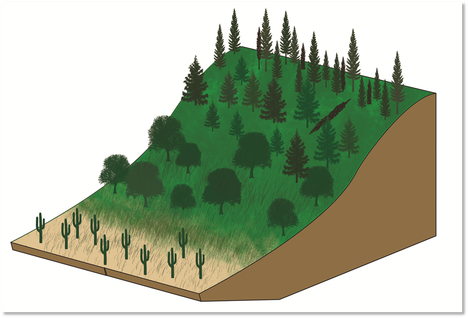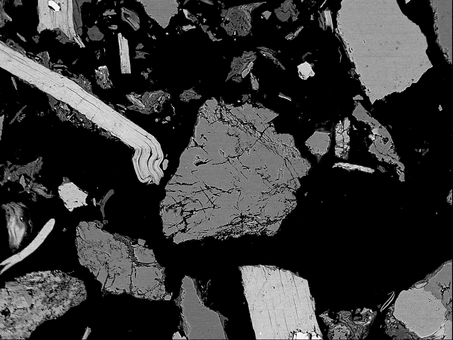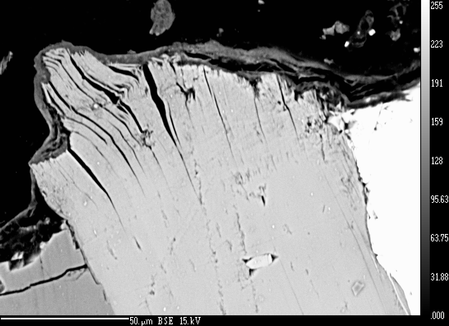|
Soils of the Santa Catalina Critical Zone Observatory
My dissertation research focused on how mineral weathering and soil carbon storage changed with landscape position and the contrasting climates encompassed by the Santa Catalina Mountains of southern Arizona. The Santa Catalina Mountains are located along an environmental gradient in southern Arizona where co-varying climate and vegetation community properties have generated distinct changes in soil development across a relatively short distance (<20 miles). My sites ranged from desert scrub environments (near Biosphere 2) to mixed conifer forest close to the summit of Mount Lemmon. I conducted my research with the University of Arizona's Critical Zone Observatory, an interdisciplinary group of scientists seeking to understand critical zone processes, from the vegetation canopy to groundwater.
Quantifying soil development using a profile development indexThe soil morphologic, physical, and chemical properties measured for all of my samples were used to calculate profile development indices to quantify soil variation with landscape position across the Santa Catalina Critical Zone Observatory. The results of this research demonstrated that climate and landscape position exert significant control on soil development in semiarid ecosystems, particularly in high elevation forested environments. In this paper, we quantified particle size distribution, soil carbon storage, and other soil properties across contrasting landscapes. We also demonstrated that Harden's profile development index is an effective tool for detecting regional to hillslope scale variations in soil properties.
Link to associated publication: Quantifying climate and landscape position controls on soil development in semiarid ecosystems Microscale Mineral TransformationsA cross-scale analysis of feldspar mineral transformation across my sites connected measures of pedon-scale soil development, depletions of feldspar and sodium in bulk soil, and elemental losses across feldspar grains at the microscale. Greater soil development in the mixed conifer pedons corresponded to increased total feldspar and sodium losses. Desert scrub soils presented less evidence for feldspar transformation including lower profile development indices, gains in total feldspar percentages attributed to dust deposition, and less Na chemical depletion at the microscale. Greater soil development in convergent footslope positions relative to adjacent divergent sites was consistent across all sites, with the highest degree of total feldspar depletion occurring in the conifer convergent locations. Our results demonstrate the interactive role of climate, vegetation, and landscape position in shaping the critical zone across multiple scales of study.
Link to associated publication: Linking soil element-mass-transfer to microscale mineral weathering across a semiarid environmental gradient Link to associated publication: A cross-scale study of feldspar transformation in the Santa Catalina Mountain Critical Zone Observatory
|
|




